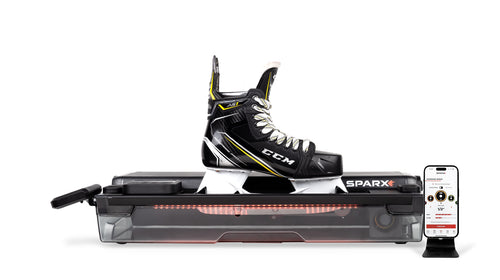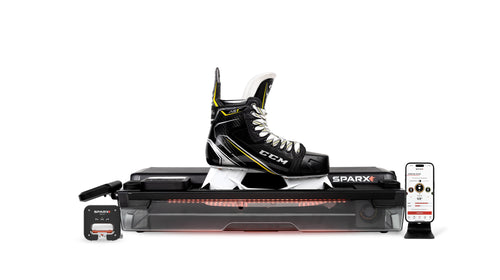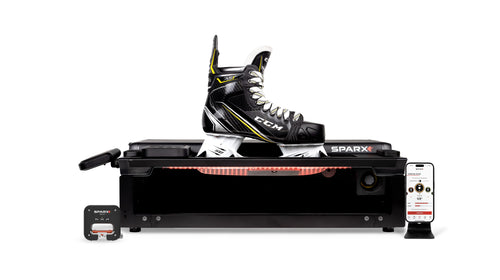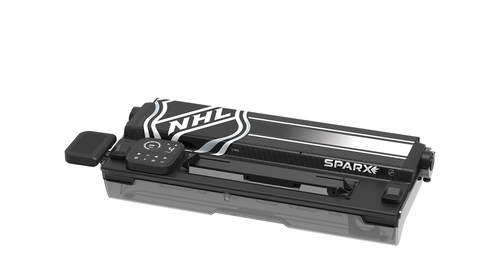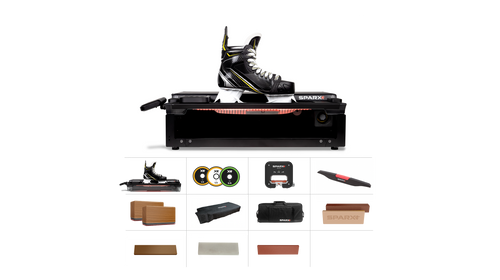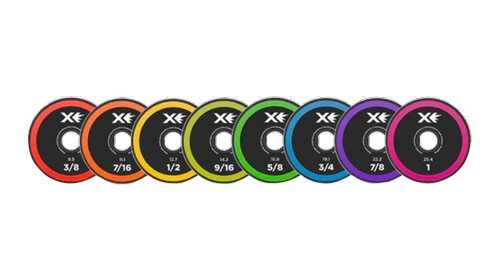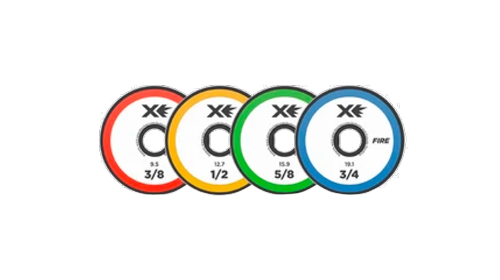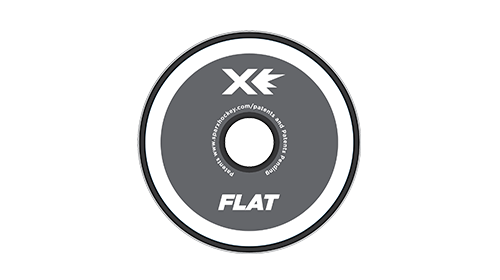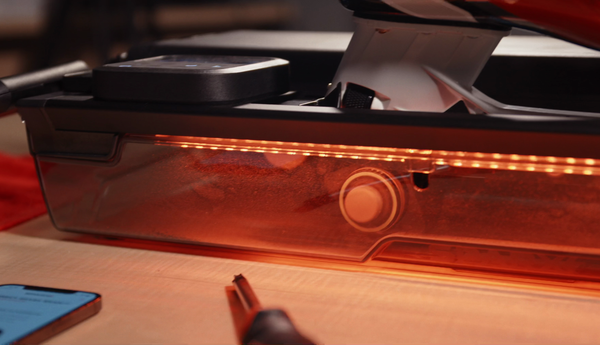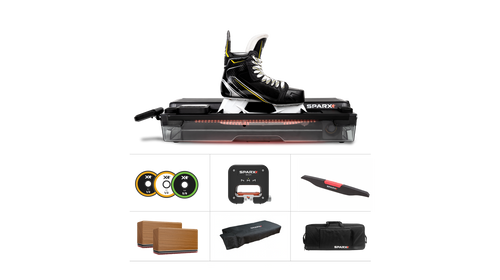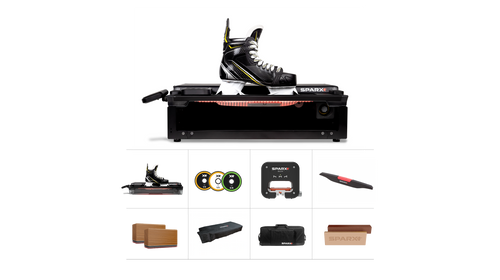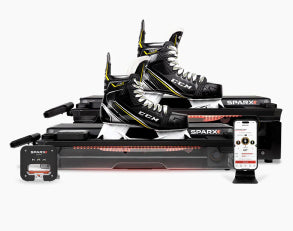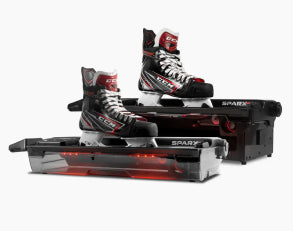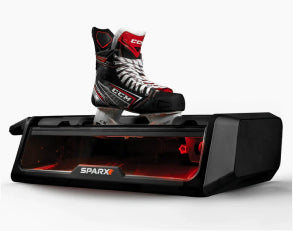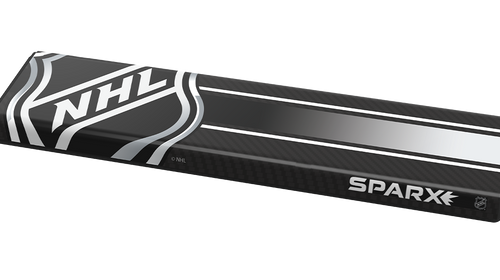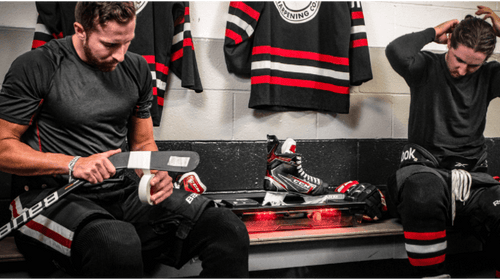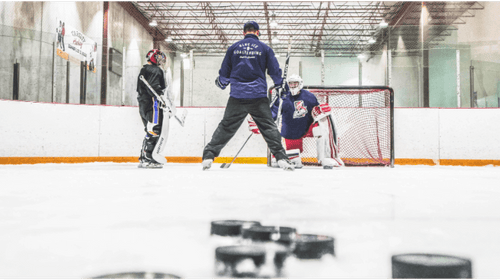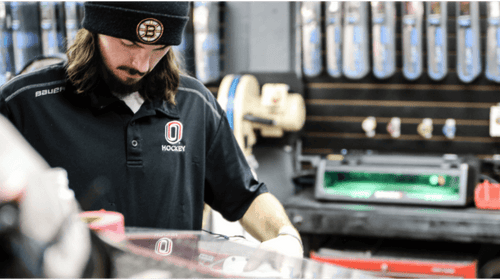After testing and confirming the edges of your skate blade are even, you will want to confirm they are indeed sharp. "Sharp” is the second ‘S’ in ESS.
When we say sharp edges, what we mean is that the inside and outside edges of your skate blade are razor-thin, clean and without burrs or knicks.
To be clear, sharp edges are always a good thing. We have had some people say to us “I don’t like my edges too sharp”. Sharp edges are required in order for hockey players to turn, pivot and stop short. The sharper, the better. A more accurate description from these folks would be “I don’t like my hollow too deep.” Since most players don’t think in terms of ROH, we can see how skating on a radius that is too deep for your size, your skating style or the ice conditions you are on can feel as if the edge is too sharp. The truth is, you are just sinking too far into the ice surface; creating too much ‘bite’ and not enough ‘glide’. The solution is not duller edges, the solution is a larger ROH. This will cause more of your skate blade to float on top of the ice surface and less to sink below it. As a result you will feel faster and stopping will likely be much smoother. Your edges, though, can (and should) still be razor sharp.
If you’ve ever had a skating experience where one of your edges, in a certain location on the blade, seems to have just disappeared this is likely due to a lost or dull edge. A good sharpening will restore that edge so the blade has bite once again and you can turn and stop with confidence.
Testing for Sharp Edges
Many people are familiar with the fingernail test shown in the image below. We have found, time and again, that this simple test does a great job ensuring that a suitable edge is present on a skate blade.

We recommend testing 3-5 spots up and down the blade on both the inside and outside edges. If you feel a little bite to your nail as you drag it across the edge – the edge is sharp. If your fingernail ever feels like it slides across the edge smoothly (i.e. as if the edge were rounded and not sharp) – this is an indication that the edge might not be sharp enough to skate on with confidence. Be certain to perform this test on any areas of your blade where you know there was prior trouble with the edge.
In addition to the fingernail test, you can usually see if an edge is not sharp. The edge of a perfectly sharpened skate blade will NOT be visible. What we mean by that is that you should only be able to see the side or face of the skate blade and the skating surface. You won’t however see anything at all at the intersection of these two faces. Here’s a look at the edge of a skate blade. Outside the red lines, the edge is not visible. One can see the side of the blade and the skating surface, but the edge where these two surfaces meet is invisible. Between the red lines, you can see the edge at the intersection of the side of the blade and the skating surface (bottom of the skate blade). This is what we call a dull edge or a lost edge (ironic that a lost edge is actually the only edge you can see). This dull edge was probably created by stepping on something hard (concrete or linoleum flooring) or smashing the edge into a goal post, boards, or other hard object around the rink.

Lost edges will happen. Hockey is a physical game; blades will clash, they will knock into goal posts, they'll find a rogue piece of dirt or sand on the bench and they'll just get damaged. Being smart by using skate guards or soakers will save you some headaches for sure. The important thing is to check your blades regularly and know what you are looking for when you do. While your skates can never be too sharp, they can certainly be too dull and that can take a whole lot of fun out of the game.
For those skaters who do feel their skates are too sharp at times, we recommend reviewing our post on selecting an ROH. You should experiment with a slightly shallower radius. For example, if you’re skating on a 1/2” ROH and you artificially dull your skates following every sharpening we suggest you switch to 5/8” ROH and give it a try. You’ll likely find that your edges feel great right after a sharpening and you feel like you’re gliding much more effortlessly.

